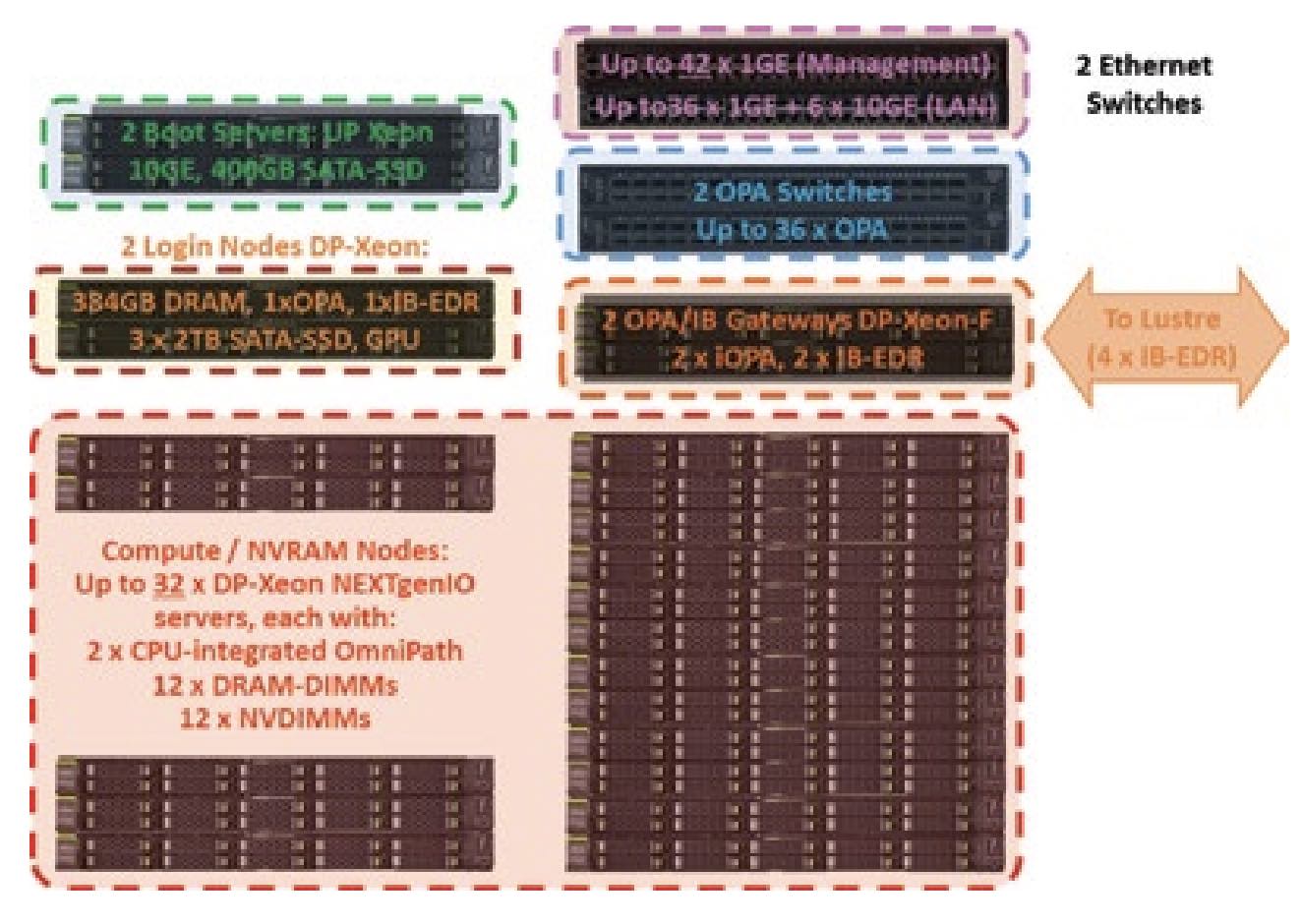 The EPCC supercomputing centre at the University of Edinburgh has installed a prototype system developed by the NEXTGenIO project. Funded by the European Commission, NEXTGenIO is an R&D project tasked with developing solutions to high performance computing’s I/O and data challenges.
The EPCC supercomputing centre at the University of Edinburgh has installed a prototype system developed by the NEXTGenIO project. Funded by the European Commission, NEXTGenIO is an R&D project tasked with developing solutions to high performance computing’s I/O and data challenges.
Our ongoing collaboration with NEXTGenIO allows us to develop solutions to speed up time-consuming I/O operations in HPC applications and workflows, leading to faster execution, less use of resources, and improved scalability,” said Trish Damkroger, vice president and general manager of the Extreme Computing Group at Intel. “With this cluster, applications can operate with very high memory capacity requirements with fewer compute nodes.”
The problem
High-end HPC systems today provide data storage that is separate from the compute nodes. As such, the I/O subsystem often struggles to deal with the degree of parallelism present simply because too many processors are trying to communicate with slow disk storage at once. As we move into the domain of extreme parallelism at the Exascale, this I/O challenge must be addressed if such systems are to deliver appropriate performance and efficiency for their application user communities. At the same time, high-performance data analytics applications are moving more and more into the supercomputing domain, and their data requirements post a challenge for the status quo of HPC systems.
The hardware solution
Using a requirements-driven co-design process involving all the stakeholders of the NEXTGenIO project, Fujitsu and Intel developed a prototype system using Intel Optane DC persistent memory. A key output of the project, this 34-node cluster has now been delivered by Fujitsu and installed at the University of Edinburgh’s Advanced Computing Facility, where it is now in the final the testing and integration phase before going into full production during the summer. Each of the prototype’s 34 compute nodes is equipped with two 2nd-generation Intel Xeon Scalable processors (formerly code named “Cascade Lake”) and 3 TByte of Intel Optane DC persistent memory, and include a software stack to seamlessly support I/O and memory intensive workloads.
Taking delivery of the NEXTGenIO prototype cluster is the culmination of years of hard work from the project consortium,” said Professor Mark Parsons, Director of EPCC. “The system presents a key step forward on the path to addressing the I/O challenge in high-performance and data intensive computing.”
NEXTGenIO started on the 1st October 2015 and is set to run for 4 years. The consortium partners are EPCC, Intel, Fujitsu, Technische Universität Dresden, Barcelona Supercomputing Center, the European Centre for Medium-Range Weather Forecasts, Arm (formerly Allinea) and Arctur.
For more information, see the NEXTGenIO Hardware Architecture White Paper.





